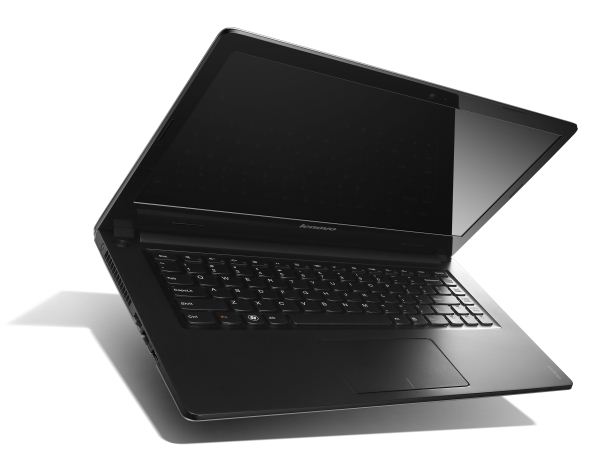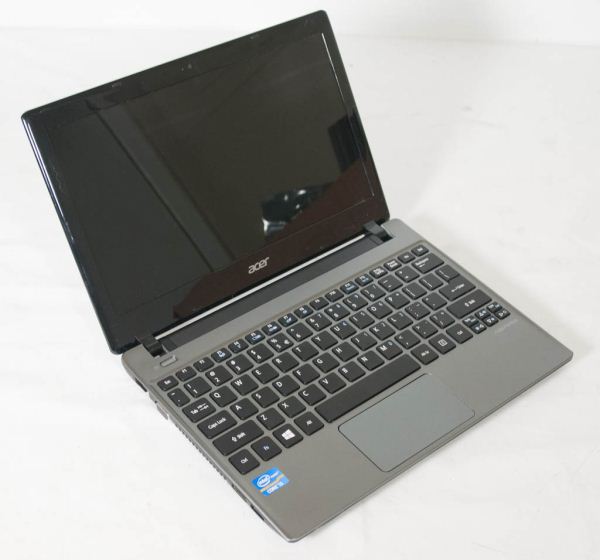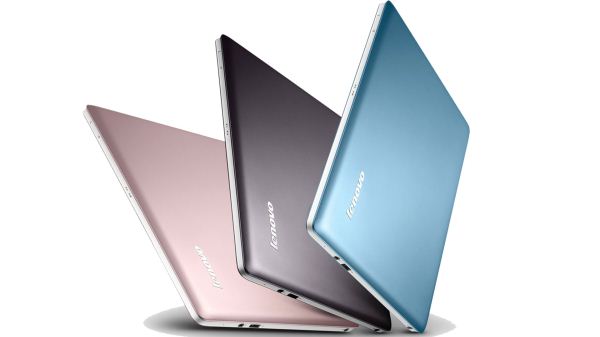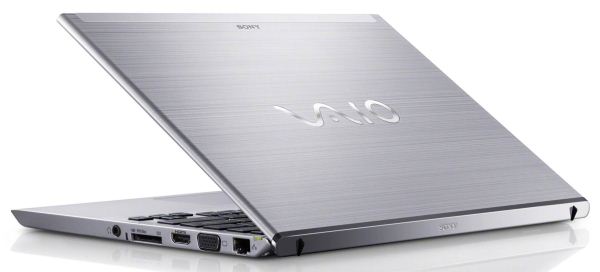Holiday 2012 Ultrabook and Ultraportable Guide
by Jarred Walton on December 12, 2012 4:00 AM EST“Budget” Ultrabooks and Ultraportables
We’re going to stretch the definition of ultraportable a bit throughout the guide, as the difference between a 1” thick laptop and a 0.7” thick laptop may or may not matter all that much. Keep in mind that thinner usually means a few things: most thin laptops are inherently lighter, but being thin usually means it’s harder to cool the parts (restricted airflow) and typically the keyboards have less key travel. If you’re trying to keep costs as low as possible, there are a few options: get a non-Ultrabook (either with and AMD APU or an Intel CPU), or look for a very inexpensive Ultrabook with hybrid storage. We’ve got three picks, one for each options.
AMD-based Ultraportables
If you’re after an AMD equipped ultraportable, your options are very limited right now, particularly in the US. Toshiba has a 15.6” Satellite S955D, but we’re trying to find a 13.3” or smaller offering. HP’s Envy Sleekbook 6z-1100 likewise misses the cut with a 15.6” LCD, though it can be configured with an A6-4466M, A8-4555M, or A10-4655M if you’re okay with the larger size—Walmart currently has the A8-4555M model selling for $450, which is a great price. Lenovo ends up the closest with their 14” IdeaPad S405, and sadly that’s the smallest AMD-equipped ultraportable we can find, so they win by default. The good news is that the S405 comes priced quite reasonably at $503 with 4GB RAM, 500GB HDD, and a 1.6GHz A8-4555M (along with Windows 8)—or as little as $400 (with current instant savings) with the A6-4455M.
Let’s be clear here: budget ultraportables are not going to compete directly with high-end Ultrabooks or other laptops. With a price of just $400-$500, something has to give, and that something is a few of the extra amenities. The S405 comes with an always-painful 1366x768 resolution glossy LCD; on an 11.6” laptop that’s tolerable, but on 14” it’s purely a cost-cutting measure. Lenovo’s IdeaPad line represents their consumer focus, so you also lose some of the build quality that you’d got on a ThinkPad or other high-end laptop. Battery life is also relatively weak on the S405, thanks to the small 4-cell battery. At the end of the day, however, we’re looking at $400 for a reasonably equipped ultraportable. The A6-4455M and A8-4555M aren’t going to win any CPU performance comparisons, but they’re still a healthy jump up from Atom and Brazos and more than fast enough for typical computing tasks, plus you get a fairly decent iGPU in the HD 7500G/7600G. That’s all in a package that’s less than an inch thick and weighs just under four pounds.
Intel-based Ultraportables
On the Intel side of the fence, there are a lot more offerings to look at, and the manufacturers have clearly put a bit more effort into the designs. Where we only had three AMD LV Trinity laptops to look at, there are fully 34 sub-$750 laptops with Intel Ivy Bridge ULV processors available at Newegg right now. The least expensive options start at $500, with 20 falling more into the $700-$750 range. The good news is that for that much money, you can get a fully equipped Ultrabook if that’s what you’re after. As with AMD, we’re going to eschew anything larger than 13.3” this time, which leaves us with 14 laptops to consider.
At the bottom of the price list is Acer’s 11.6” V5-171-6422, an almost Ultrabook that Dustin reviewed recently. The fact that it’s not actually an Ultrabook means that it’s a bit thicker and has better key travel, but you get a 500GB 5400RPM stock. The good news is that you can find the V5-171 going for $499 on Amazon, which is a great price for an i5-3317U based laptop. With the savings relative to actual Ultrabooks, you could easily buy a quality 128GB or even 256GB SSD. The V5-171 weighs just over three pounds, and it pretty much puts the nail in the coffin for most netbooks.
As an alternative that’s a bit larger than the V5-171, consider Dell’s Inspiron 13z. It’s nearly an Ultrabook, but it lacks SSD-storage and might be just a hair too thick. At the regular starting price of $600 for the i3-3217U equipped model, I’d give it a pass, but right now the 13z with i5-3317U, 8GB DDR3-1600, and a 500GB 5400RPM HDD can be had for just $550. If you don’t mind the lack of Turbo Boost, the i3-3217U with 6GB model knocks $100 off the price, going for an attractive $450. Dell skimps on a few areas like the LCD and Ethernet (100Mbps, really?), and the keyboard isn’t backlit, but otherwise it’s a very decent laptop. CPU performance should be quite a bit faster than the LV Trinity parts above, but iGPU performance is likely slower. Something else to consider is that the Inspiron 13z is actually upgradeable with a bit of work, so you can swap out the HDD for an SSD and upgrade the RAM.
Budget Ultrabooks
Looking at the remaining laptops in our Newegg list, it’s interesting to note that not a single option comes with pure SSD storage; all of the sub-$750 Ultrabooks have hybrid storage, which is something we’d really like to get away from. The cost of a 24GB/32GB SSD with a 500GB HDD should be pretty much equal to a 128GB SSD, but in the “more is better” category we find all of the manufacturers vying for your dollars with 500GB HDDs and SSD caching. Caching is still a step up from pure HDD storage, but in practice it often feels more like a hard drive when you’re actually wanting it to perform. Note that there are also some Sandy Bridge Core i3 Ultrabooks still hanging around; I suppose they’re not bad, per se, but I’d suggest going with Ivy Bridge and HD 4000. So with that in mind, is there any one specific Ultrabook we’d recommend above the others?
This is a tough call, frankly, as just about everything starts looking similar in terms of features and specs at these prices. None of the Ultrabooks under $750 have anything better than a 1366x768 display, which is a real shame. I’m also ruling out Sandy Bridge and Core i3 equipped Ultrabooks, so what we end up with is just two options, both near the $700 mark: the Lenovo U310 and the Sony VAIO SVT13125CXS. Everything else that meets the CPU requirement (at least Core i5 IVB) tends to be $800 or more. Between the Sony and the Lenovo offerings, Sony gets the nod in terms of RAM as it ships with 4GB RAM onboard with a single SO-DIMM slot, so 8GB is possible and the default configuration ships with 6GB. On the other hand, Lenovo offers an extra USB port and what I consider to be a better keyboard layout. For the small difference in price, you can go either way depending on what you value most.
Update: The Lenovo U310/U410 both appear to have had issues in the past with faulty WiFi, which you can read about on Lenovo's forums. A hardware fix was implemented this past summer, but at least one reader purchased a laptop in November and received a unit manufactured prior to the fix. If you're not willing to deal with the hassle of sending a laptop in for repairs, I'd suggest sticking with the VAIO.















77 Comments
View All Comments
EnzoFX - Wednesday, December 12, 2012 - link
What about build quality? Those cheap laptops are cheap for a reason. They'll last you maybe two years lol. Let alone the merits of portability and usability (What's the point of some bit laptop that you will hate using because it's built so cheaply and it has shitty kb/trackpad/screen, etc).kyuu - Wednesday, December 12, 2012 - link
What you say might hold some weight if other laptops had better battery life than expensive ultrabooks. They don't. Unless you're getting a sheet battery or a gigantic battery that bulges out the bottom.Also, ULV chips really perform pretty much on par with standard laptop chips. I did some research on a particular ULV i5 that was in an ultraportable (though not quite an ultrabook) versus the standard LV i5 that was also an option. My finding was that the ULV i5 had pretty much equal performance in all respects to the standard LV i5, it just drew less power and had a price premium. Not really surprising considering ULVs are generally the same chips as the standard ones, they're just binned to get the ones that run at lower voltages.
SetiroN - Wednesday, December 12, 2012 - link
I'm not using the MBA as an example, we're talking ultrabooks. Apple's ultraportable admittedly is a better option, but no ultrabook is on par with it on multiple sides so considering were're talking ultrabooks, I couldn't care less that you're posting from your macbook air (as if the idiotic smartphone tapatalk signatures weren't enough, btw).As I said, I have an UX31A (the top version with the 1080p screen, i7 and 256Gb SSD), and it's nowhere near worth the price premium.
- the screen is good, but it's a common e-IPS that's not worth $500. Also, 1080p is overkill (and 16:9 is just stupid at small diagonals, give me a freakin' 16:10 display FFS) and not prone to desktop usage
- the ULV i7 performs well, but it's not better than a normal voltage i3 3110m. I find myself limiting the CPU frequency on the go to retain that 1 more hour of battery and I could achieve exactly the same with said i3: at their low power states, 800-1200MHz, they run at the same voltage and consume the same amount of power, something I hadn't considered before
- build quality isn't all that good: the hinge becomes slightly loose over time and the screen gets damaged over contact with the keyboard border when closed). Yeah, it's made out of an aluminium unibody, but it's absolutely not solid, it easily bends and honestly compares to a normal plastic chassis. Macbooks' sturdiness is way above this
- the trackpad SUCKS
- despite the ULV chip, it's still relatively noisy under even slight load
-at 1.4Kg and 18mm, it's not that much more portable than normal 1.8Kg 25mm 13inchers
And that's arguably the best ultrabook on the market I'm talking about here.
So yeah, current ultrabooks are all about style and milking customers.
Unfortunatly Intel and the industry are pushing towards them enough that the great alternative that could easily be possible nowadays doesn't exist.
A more average 13" chassis (Thinkpad 430, Vaio 13s) has equal or better quality than this Asus ultrabook and could easily pack a configuration such as this:
1600x900 non-TN screen
i3 3120m
GF 620m or better
70Wh battery
128GB mSATA SSD + 2,5" HDD
for $700 less than the $1500 I paid for my ultrabook
But no, manufacturers need to follow fashion, stay within Intel's ultrabook specs and push pricey stylish designs, leaving consumers without a smarter option to buy.
Shadowmage - Wednesday, December 12, 2012 - link
I have a Lenovo Yoga, which I bought for $825 shipped off Amazon. It has a 1600x900 13" IPS touchscreen, high quality Lenovo keyboard, and quite decent touchpad. Also, it weighs around 3.4lb and 17mm thin.A Thinkpad T430 costs just a hundred dollars less and is more than 1lb heavier, a larger form factor (14" vs 13"), and doesn't have the touchscreen (which is surprisingly useful).
It's not form over function, this is actually a best-in-class machine.
arswihart - Thursday, December 13, 2012 - link
The trackpad rocks on the UX31A with the latest non-Asus Elantech drivers (I forget the driver number). I use them along with Google TouchFreeze (disables touchpad when typing), and I'm extremely happy with the touchpad.The ASUS touchpad drivers worsen accuracy and sensitivity. They fool you into upgrading to them by incrementing Elantech's driver version number, as if Elantech developed the drivers. Instead, ASUS is hacking on them and making them worse.
Personally I love my UX31A, if you don't need a bunch of CPU power and can deal with the 4GB RAM, it's really a beautiful device with a display that is second to none. Battery life is acceptable but agreed it's not great.
arswihart - Thursday, December 13, 2012 - link
I agree the model you bought (i7 with 256GB SSD) is a waste of money. The base model has essentially identical performance and is a few hundred bucks cheaper.So, I can see how the UX31A sucks for people like you who bought the expensive version.
JNo - Wednesday, December 12, 2012 - link
"I'm not sure what post you've read, but nowhere did I say I needed more performance or heavy graphics."But you did say:
"I'd much rather have a standard i3 (which performs better) than those overpriced ULV cpus, in a thicker laptop that takes advantage of it with a seriously hefty battery and acceptable dedicated, switchable graphics."
You may not have shouted it out directly but I think most would agree that any normal person would infer that you actually find your ultrabook lacking at times and could appreciate some more grunt. You may not *need* it but there' s an implication that it wouldn't go amiss. Maybe you should read your own post more carefully before getting too snarky in your reply...
SetiroN - Wednesday, December 12, 2012 - link
You're right, I apologise for coming out too sour.JarredWalton - Thursday, December 13, 2012 - link
Hey, what do you think you're doing!? This is the Internet. You NEVER, EVER apologize on the Internet! Man, when will people ever learn?;-)
althaz - Thursday, December 13, 2012 - link
No, you pay for portability, screen quality, build quality and battery life. As an added bonus you can pretty frequently also get a huge boost to everyday speed and performance with an included SSD (the best thing about ultrabooks).I don't give a shit about graphics in my portable PC (the HD4000 is no slouch, btw, it's not the integrated graphics of old), I've got a desktop with a 4Ghz i5 and OC'ed GTX670 with 16Gb of RAM for when I want performance.
I can't take my desktop on the train though. But with an ultrabook (I'll be picking one up that is also decent as a tablet as well, thinking the Samsung transformer-esque model with ULV i5 and 128Gb SSD) I can do my University assignments on the train (I work full-time so it's the perfect opportunity to get stuff done) and I can take it hiking or camping as well as watch a movie or read an e-book with it at home. I can also browse the web whilst sitting on the couch or catch up on my work emails while I'm on a plane.
Laptops are universally rubbish for performance, so why not get one that is ACTUALLY portable?